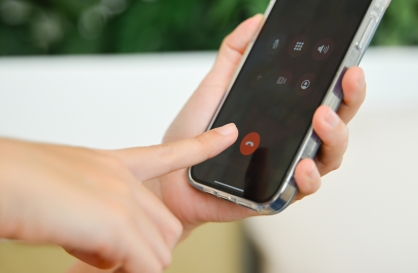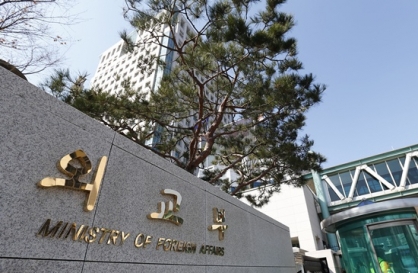NK claims to have tested upgraded Rodong missiles
By Shin Hyon-heePublished : Sept. 6, 2016 - 16:31
North Korea claimed Tuesday to have used an upgraded model of its mid-range Rodong projectiles during their test fire one day earlier in a fresh display of its unbridled ambition to shore up its nuclear and missile programs.
State media said North Korean leader Kim Jong-un observed the liftoff in which three ballistic missiles flew some 1,000 kilometers above the East Sea toward Japan, expressing “great satisfaction” and calling for sustained efforts to develop the country’s nuclear capabilities.
State media said North Korean leader Kim Jong-un observed the liftoff in which three ballistic missiles flew some 1,000 kilometers above the East Sea toward Japan, expressing “great satisfaction” and calling for sustained efforts to develop the country’s nuclear capabilities.

The latest launch was designed to “reassess the flight safety and guidance of the ballistic rockets, which have been deployed after performance improvement, while judging and evaluating the actual fight competency of the artillery units,” the official Korean Central News Agency said, adding the results were “perfect.”
“We need to continue to expand miraculous achievements in strengthening the nuclear force which have been taking place in this historic year opening with a hydrogen bomb,” Kim was quoted as saying during the event, referring to the country’s Jan. 6 underground blast.
“Through the ballistic rocket firing exercise, the military might of the artillery units, which have strengthened and developed into a powerful class capable of staging a pre-emptive strike at any time and any place, was presented to the whole world,” the dispatch added.
Given their flight trajectory, the tested weapons are presumed to be the Rodong intermediate-range missiles with an upgrade in the warhead part, Yonhap News reported, citing an unnamed government source who analyzed images published earlier in the day by The Rodong Sinmun, a Workers’ Party mouthpiece.
The missiles in the photos were seemingly different from those unveiled following the Rodong’s July 21 test. They appear to be akin to the Scud missile in the cone-shaped warhead section but had a slightly hollow surface in the propellant and other parts.
“We knew that North Korea has been improving the Rodong,” the source was quoted as saying. “The North made it public today through the paper and indeed presented the upgraded edition.”
But Seoul’s Defense Ministry remained cautious, saying that together with the US, it has determined the missiles were simply the Rodong.
Asked about the possibility of the projectiles being Scuds, spokesperson Moon Sang-gyun dismissed it, citing “various circumstances and data including debris and flight trajectory.”
“What we announced yesterday was based on our judgment and it’s accurate … and the results are shared by the US,” he said at a news briefing Tuesday, without elaborating due to intelligence matters.
The US Strategic Command issued a statement saying two of the three missiles were presumably intermediate-range ballistic missiles but it is still assessing the other one, without specifying their names.
Following the firing, Seoul, Washington and Tokyo requested an emergency meeting of the UN Security Council in New York later in the day to discuss its response to yet another breach by Pyongyang of multiple resolutions.
The three countries are also seeking to deliver a solid message against the communist state’s ceaseless provocations during the ongoing ASEAN and forthcoming East Asia summits in Laos.
Beijing, for its part, has expressed its displeasure over the launch, which came shortly after a summit between President Park Geun-hye and her Chinese counterpart Xi Jinping on the sidelines of the Group of 20 conference in Hangzhou.
On the bilateral front, the top negotiators of South Korea and the US held a phone conversation late Monday and agreed to meet in Seoul next week to explore joint countermeasures.
Kim Hong-kyun, special representative for the Korean Peninsula’s peace and security affairs at the Foreign Ministry here, will host the US Special Representative for North Korea Policy Sung Kim on Sept. 13, the ministry said.
By Shin Hyon-hee (heeshin@heraldcorp.com)
“We need to continue to expand miraculous achievements in strengthening the nuclear force which have been taking place in this historic year opening with a hydrogen bomb,” Kim was quoted as saying during the event, referring to the country’s Jan. 6 underground blast.
“Through the ballistic rocket firing exercise, the military might of the artillery units, which have strengthened and developed into a powerful class capable of staging a pre-emptive strike at any time and any place, was presented to the whole world,” the dispatch added.
Given their flight trajectory, the tested weapons are presumed to be the Rodong intermediate-range missiles with an upgrade in the warhead part, Yonhap News reported, citing an unnamed government source who analyzed images published earlier in the day by The Rodong Sinmun, a Workers’ Party mouthpiece.
The missiles in the photos were seemingly different from those unveiled following the Rodong’s July 21 test. They appear to be akin to the Scud missile in the cone-shaped warhead section but had a slightly hollow surface in the propellant and other parts.
“We knew that North Korea has been improving the Rodong,” the source was quoted as saying. “The North made it public today through the paper and indeed presented the upgraded edition.”
But Seoul’s Defense Ministry remained cautious, saying that together with the US, it has determined the missiles were simply the Rodong.
Asked about the possibility of the projectiles being Scuds, spokesperson Moon Sang-gyun dismissed it, citing “various circumstances and data including debris and flight trajectory.”
“What we announced yesterday was based on our judgment and it’s accurate … and the results are shared by the US,” he said at a news briefing Tuesday, without elaborating due to intelligence matters.
The US Strategic Command issued a statement saying two of the three missiles were presumably intermediate-range ballistic missiles but it is still assessing the other one, without specifying their names.
Following the firing, Seoul, Washington and Tokyo requested an emergency meeting of the UN Security Council in New York later in the day to discuss its response to yet another breach by Pyongyang of multiple resolutions.
The three countries are also seeking to deliver a solid message against the communist state’s ceaseless provocations during the ongoing ASEAN and forthcoming East Asia summits in Laos.
Beijing, for its part, has expressed its displeasure over the launch, which came shortly after a summit between President Park Geun-hye and her Chinese counterpart Xi Jinping on the sidelines of the Group of 20 conference in Hangzhou.
On the bilateral front, the top negotiators of South Korea and the US held a phone conversation late Monday and agreed to meet in Seoul next week to explore joint countermeasures.
Kim Hong-kyun, special representative for the Korean Peninsula’s peace and security affairs at the Foreign Ministry here, will host the US Special Representative for North Korea Policy Sung Kim on Sept. 13, the ministry said.
By Shin Hyon-hee (heeshin@heraldcorp.com)




![[Weekender] Korean psyche untangled: Musok](http://res.heraldm.com/phpwas/restmb_idxmake.php?idx=644&simg=/content/image/2024/05/02/20240502050841_0.jpg&u=)

![[Eye Interview] 'If you live to 100, you might as well be happy,' says 88-year-old bestselling essayist](http://res.heraldm.com/phpwas/restmb_idxmake.php?idx=644&simg=/content/image/2024/05/03/20240503050674_0.jpg&u=)










![[Herald Interview] Director of 'Goodbye Earth' aimed to ask how we would face apocalypse](http://res.heraldm.com/phpwas/restmb_idxmake.php?idx=652&simg=/content/image/2024/05/03/20240503050732_0.jpg&u=)
